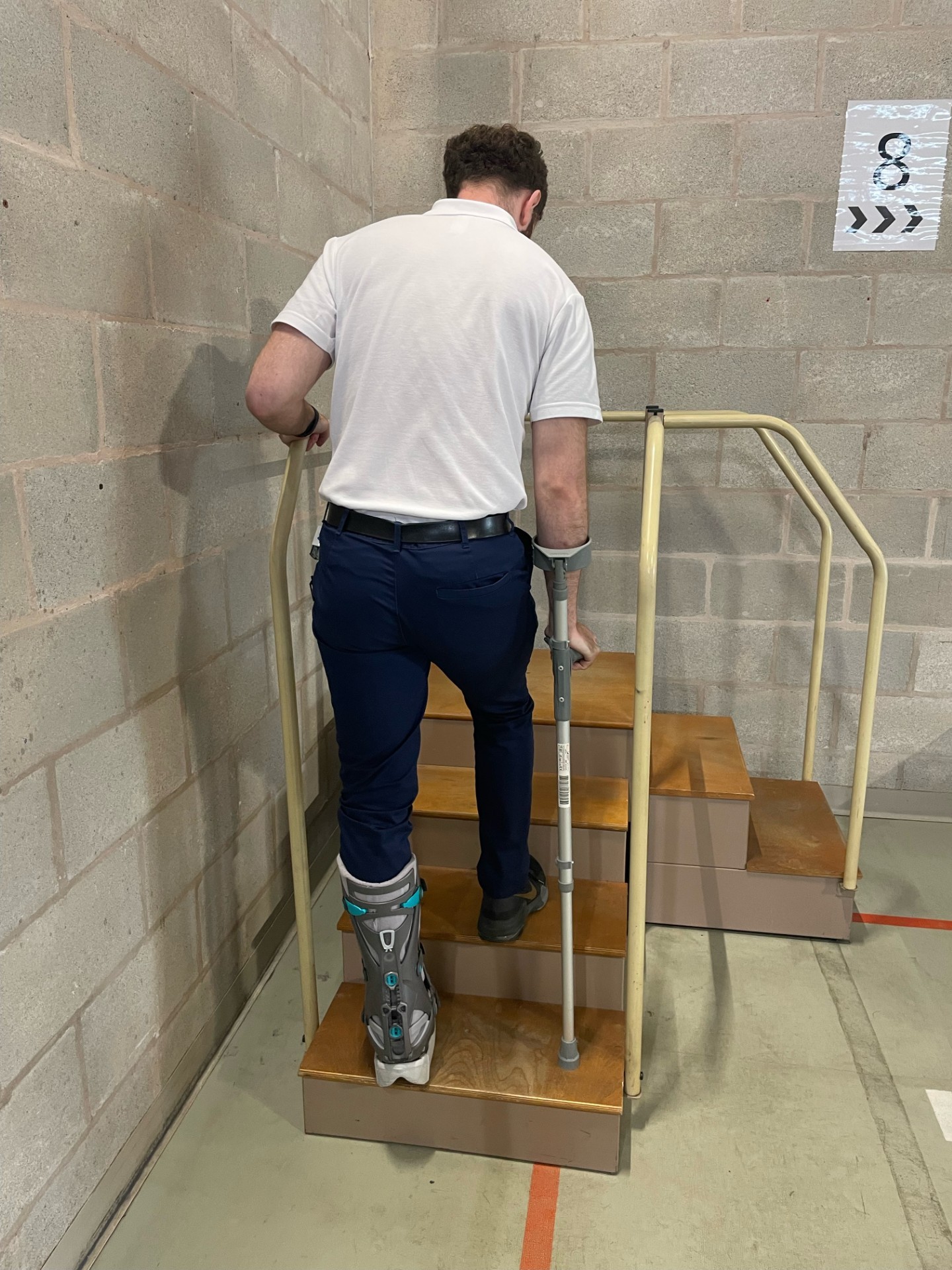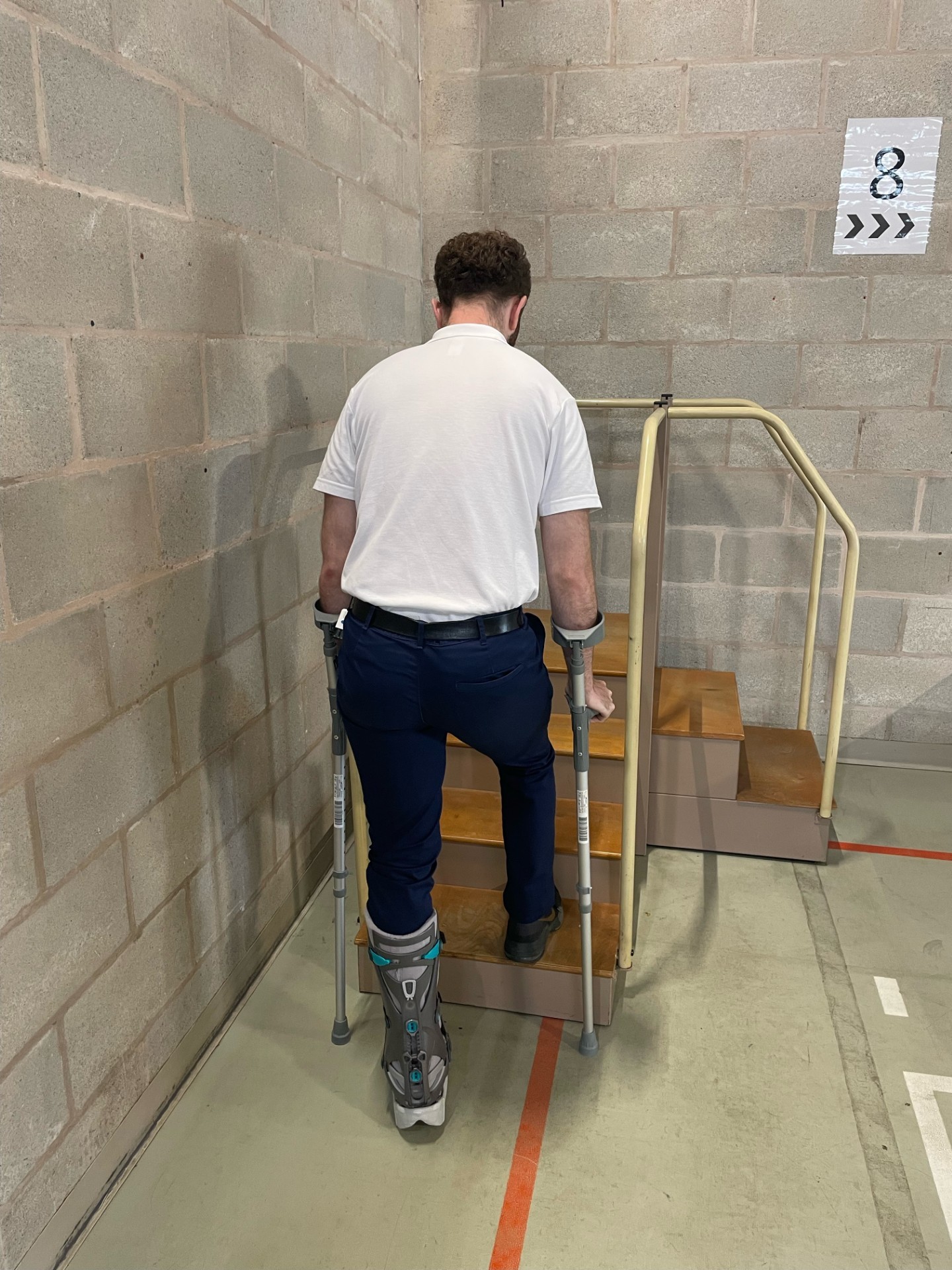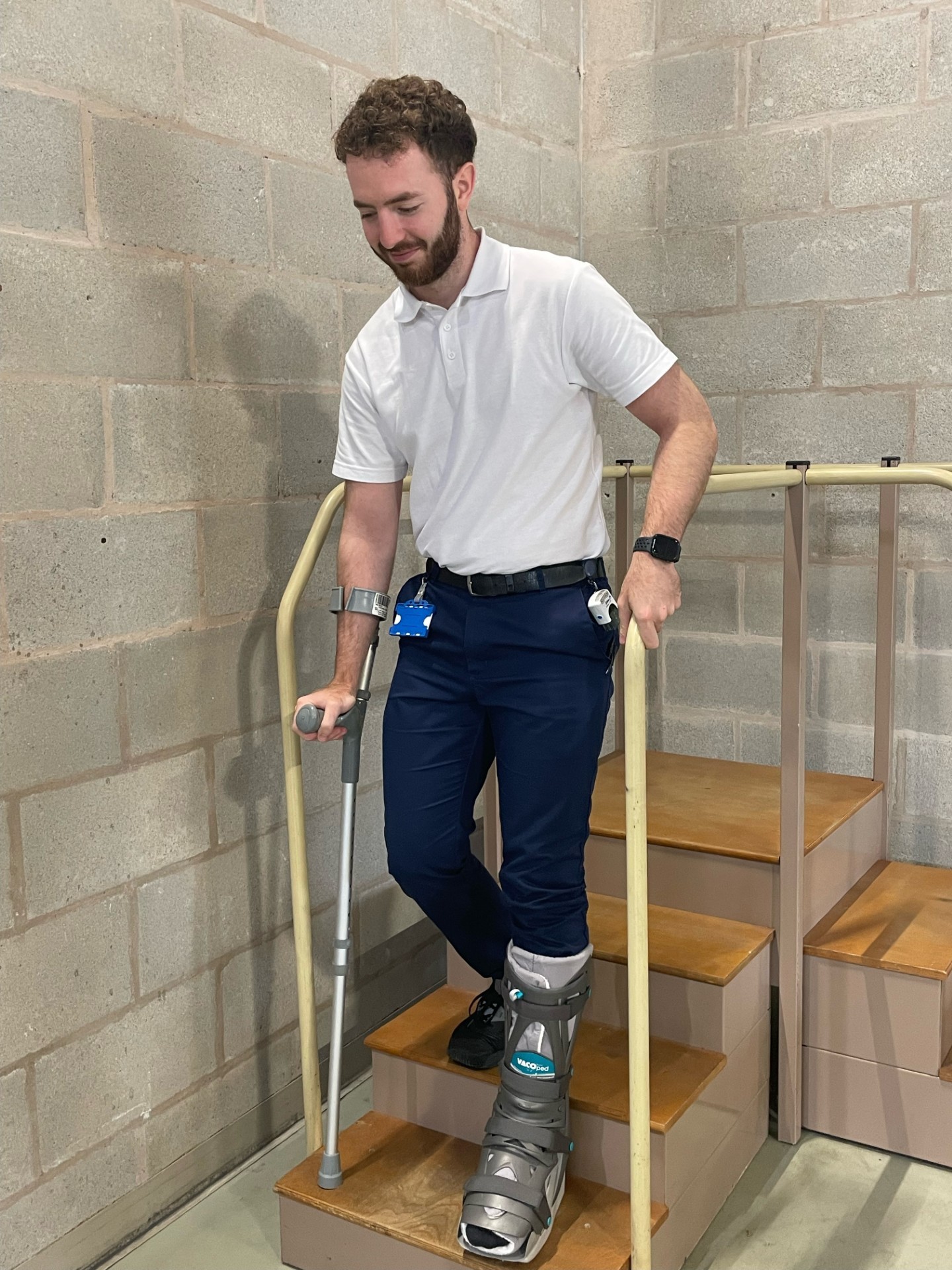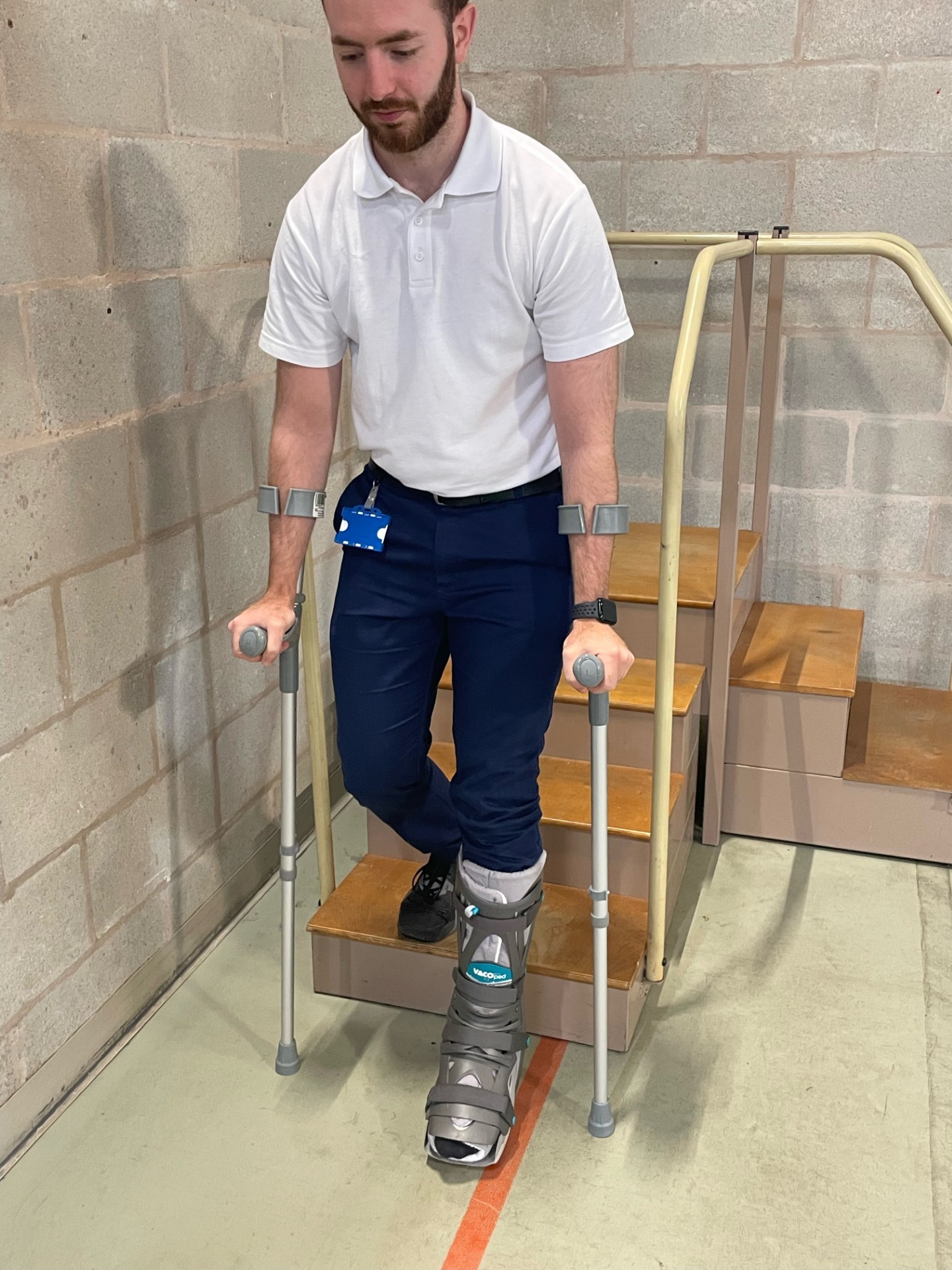“Your Potential is our goal”
You will be assessed by a Physiotherapist or health care practitioner as requiring crutches or sticks. Your crutches/sticks have been measured to your specific height requirements. Only you should use the crutches/sticks.
Safety- please note:
Elbow crutches/walking sticks have a rubber ferrule located on the end and this must be checked regularly for wear and tear. If you notice any damage to the ferrules, to the crutch/stick shaft or any loose screws/parts, please contact the Physiotherapy department.
How to use crutches
Standing up:
1. Firstly, ensure you have secure footwear on and move to the edge of the seat.
2. The crutches/sticks should be held on your good side, holding the hand grips of both crutches in one hand (in a ‘H’ shape).
3. Push off the chair or bed with one hand, with the crutches/sticks in your other hand to assist standing. Straighten up, once balanced grip one crutch with your spare hand, ensuring, with crutches that your arms are secured inside the cuff before moving.
4. Do not try to stand up using your elbow crutches with your arms in them as this will make you unstable and potentially damage your shoulders.
Sitting down:
1. With your crutches/sticks, back up to the chair or bed until you feel it behind your knees.
2. Remove both arms from crutches. Place crutches/sticks together and hold onto both hand grips (in ‘H’ shape) with one hand on the good side.
3. Reach back for the chair or bed with your free hand sliding the affected leg in front.
4. Slowly lower yourself onto the chair or bed.
Walking
A) Single elbow crutch/walking stick use:
1. The crutch/stick is held in the hand opposite to the side of your AFFECTED leg.
2. The crutch/stick is moved one pace forward at the same time as the affected leg, which moves to be in line with the crutch/stick.
3. Move the non-affected leg just beyond the crutch/stick.
B) Using two crutches NON weight bearing: “Hopping”
1. Keep the AFFECTED leg off the ground by holding it slightly in front or behind with the knee slightly bent.
2. The crutches should be moved one pace forward, slightly apart and level.
3. Lean weight onto the hands and hop on the non-affected leg up to the crutches keeping your weight forward and affected leg off the ground.
C) Using two crutches PARTIAL weight bearing:
Putting some weight through the affected leg.
1. Stand on both legs and move the crutches one pace forward shoulder width apart.
2. Move the affected leg to just behind the crutches. Lean on the crutches and step the non-affected leg forward to just beyond the crutches.
3. Try to take some weight through the arms while stepping the non-affected leg forwards.
Turning:
When turning, step around with the elbow crutches/sticks in a small circle rather then twisting on the spot.
Using your crutches on stairs:
Hold onto the handrail, hold the spare crutch on the outside of the supporting crutch, horizontally together with the handrail of the supporting crutch.
Going up – Keeping the crutch/es on the same level, step up with the non-affected leg, push up on the crutch/es and bring the affected leg up, finally moving the crutches to the same level
 Going upstairs with one crutch and a handrail.
Going upstairs with one crutch and a handrail.
 Going upstairs without a handrail. e.g. curbs.
Going upstairs without a handrail. e.g. curbs.
Going down – Maintain a hold on the handrail, put the supporting crutch/es onto the step below and lower the affected leg. Take weight through arms, step down with the non-affected leg.
 Going downstairs with one crutch and a handrail.
Going downstairs with one crutch and a handrail.
 Going downstairs without a handrail. e.g. curbs.
Going downstairs without a handrail. e.g. curbs.
If you have any questions, please ask your Physiotherapist or call us on 024 7686 5036.
George Eliot Hospital is a smoke free environment. For help and advice to stop smoking you can call the national helpline on 0300 123 1044 or visit https://
Copyright
Except where otherwise noted, this item is licensed under the CC BY license (https://
If you are a rights holder and are concerned that you have found material on our patient information resources website, for which you have not given permission, or is not covered by a limitation or exception in national law, please contact us using the Feedback form providing your contact information and full details of the material.